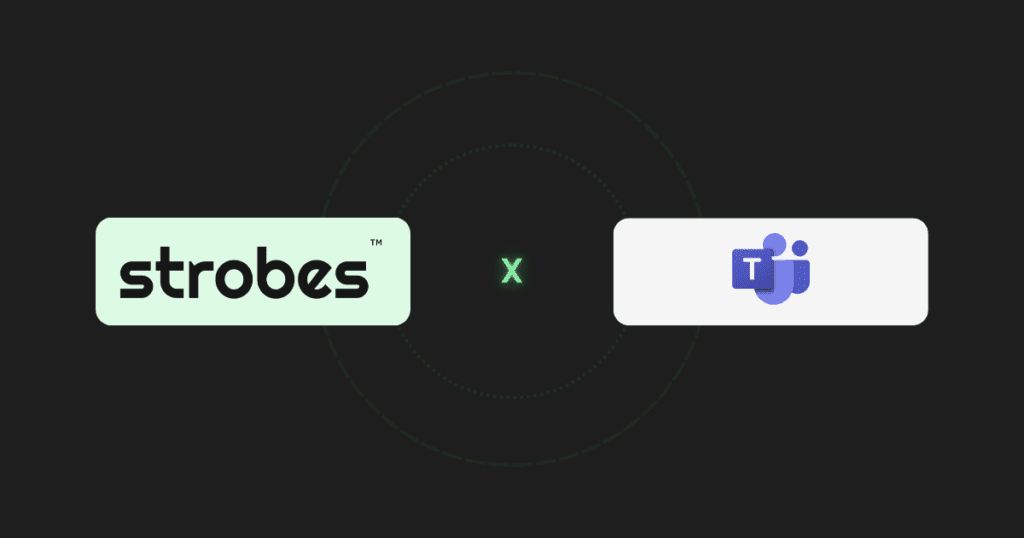Security alerts shouldn’t sit in inboxes. They should reach the people responsible instantly, in context, and where action actually happens. The goal behind the Microsoft Teams integration within Strobes’ CTEM platform is to bridge security detection with real-time operational response.
Let’s break down what this integration delivers, how it works, and why it removes a major communication bottleneck from vulnerability management.
What Is Microsoft Teams?
Microsoft Teams is a collaboration platform widely adopted across enterprise environments. It’s not just a chat tool it’s where engineering stand-ups, remediation discussions, and release cycles are tracked.
Key benefits of Teams for security workflows include:
- Dedicated channels for asset groups, squads, or critical environments
- Built-in connectors for alert routing
- Tight integration with Microsoft 365 and identity management
- Real-time notifications on desktop, mobile, and browser
But while Teams is great for internal communication, it doesn’t help you decide what’s important or when to alert. That’s where Strobes steps in.
What Is Strobes?
Strobes is a Continuous Threat Exposure Management platform designed to streamline how vulnerability data turns into remediation action. Its core modules include:
- Risk-Based Vulnerability Management (RBVM)
- Pentesting-as-a-Service (PTaaS)
- Application Security Posture Management (ASPM)
- Attack Surface Management (ASM)
Rather than being another source of alerts, Strobes consolidates findings from all your scanners, enriches them with business context, and automates workflows across systems, including Microsoft Teams.
Why This Integration Exists?
Microsoft Teams Integration with Strobes was built for teams that:
- Are already using Teams as their operational communication hub
- Need real-time updates when critical vulnerabilities are discovered
- Want to avoid overwhelming users with low-priority or bulk alerts
- Require traceability between alerts and remediation actions
By linking Strobes and Teams, security teams stay tightly aligned with Dev, Ops, and Engineering without toggling tabs or manually posting status updates.
What Microsoft Teams Integration with Strobes Actually Does?
1. Sends Structured Alerts to Teams in Real Time
Strobes can automatically push messages to designated Teams channels based on events such as:
- New critical/high-severity vulnerabilities
- SLA breaches or missed deadlines
- Status changes (e.g., “In Progress,” “Resolved”)
- Ticket creation or validation from other integrations (e.g., Jira, Azure Boards)
Each alert includes:
- Asset details (hostname, tags, environment)
- Vulnerability metadata (CVE, severity, risk score)
- SLA status and time remaining
- Direct link to the finding inside Strobes
This replaces the need to share dashboards or email CSVs; your team gets what matters, when it matters.
2. Supports Conditional Automation
Not all alerts need to be broadcasted. With Strobes’ automation engine, you define exactly which events trigger a message and where they go.
For example:
- “Only send Teams alerts for Production assets with critical vulnerabilities.”
- “Notify the SRE channel when SLA is within 48 hours of breach.”
- “Send a summary alert every Friday for unresolved high-priority findings.”
This means Teams doesn’t become another notification dump; it becomes a curated, high-signal inbox for vulnerability operations.
3. Tracks Communication from Alert to Resolution
Every alert sent to Teams is traceable back to the source vulnerability in Strobes. If that finding is resolved, retested, or re-opened, updates can be configured to post automatically.
The outcome is not just visibility, but accountability, remediation conversations happen in the open, and progress is auditable.
How Microsoft Teams Integration with Strobes Works?
Here’s how teams connect Microsoft Teams and Strobes:
Step 1 – Create a Teams Webhook
- Choose the relevant channel in Microsoft Teams
- Add the “Incoming Webhook” connector
- Name the integration (e.g., “Strobes Security Alerts”)
- Copy the generated webhook URL
Step 2 – Add Teams Tracker in Strobes
- Go to Trackers → Add Tracker
- Select Microsoft Teams
- Paste the webhook URL, give it a clear label (e.g., “Critical Vuln Channel”)
- Save and test the connection
Step 3 – Set Up Automation Rules
- Go to Automation → Create Workflow
- Choose a trigger (e.g., On Finding Create, SLA Breach)
- Define filters (severity, tags, asset groups, etc.)
- Add the action: “Send to Microsoft Teams Tracker”
- Select the tracker and customize the message content if needed
- Save and activate
From there, alerts will start flowing into Teams based on your configured logic.
What You Gain from This Integration?
| Challenge | What This Integration Solves |
| Missed remediation updates | Real-time alerts in operational channels |
| Noise from low-priority alerts | Conditional automation and message filtering |
| Manual alert sharing | Direct webhook notifications |
| Delayed team coordination | Cross-functional visibility without chasing updates |
| No audit trail for communication | Linked messages with traceability back to the finding |
Why It Matters?
Security alerts are only useful if acted on. This integration ensures the right alerts go to the right channels with no delays and no copy-pasting.
It reduces handoff friction, enhances accountability, and allows teams to respond directly where coordination already happens. Whether you’re a lean AppSec team or managing hundreds of assets across environments,
Microsoft Teams Integration with Strobes removes barriers between detection and response.
See It in Action
Ready to connect your Teams workspace with real-time security insights?
For a personalised walk through contact with our solutions team.






